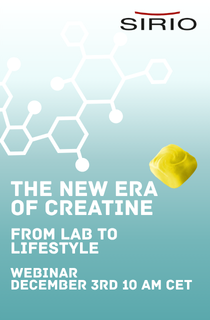Defining naturality: Twofold approach appeals to human and planetary health
22 Apr 2021 --- Despite – or perhaps because of – the term’s vagueness, naturality demands have a significant presence in the nutrition sphere. They intersect with other on-trend concepts like clean label and sustainability, appealing to consumers’ sensibilities around health of the planet and their bodies.
Experts from Nexira, Robertet, ADM and Lonza speak to NutritionInsight about what naturality means for manufacturers and consumers, respectively, and where this space is headed.
“Natural is an amorphic term open to various interpretations because it may not be formally defined in many legal jurisdictions,” points out Dr. Brent Flickinger, vice president of regulatory and scientific affairs at ADM.
For example, the US Food and Drug Administration (FDA) only offers guidance with regard to natural labeling.

These guidelines indicate a natural food “contains nothing artificial or synthetic (including all color additives regardless of source) has been included in, or has been added to, a food that would not normally be expected to be in that food.”
According to Innova Market Insights, the most common positioning for food, drinks and supplements launched with natural ingredients in 2020 was No Preservatives and Additives – found in nearly a fifth of these launches.
It is followed by Gluten-Free (17 percent), High/Source of Protein (10 percent), High/Source of Fiber (6 percent) and Organic (6 percent). Nexira’s acacia fiber is an example of a minimally processed ingredient.
Importance of processing
Laure Egoumenides, Robertet’s product manager, argues that naturality can be reflected in different ways, including transparency of natural sourcing, simple recipes and formulas, and minimal or natural processing, like aqueous extraction.
Julie Impérato, Nexira’s marketing manager, also emphasizes the importance of minimal processing. For example, some of the company’s naturality-minded customers look toward Nexira’s water-extracted botanicals or its acacia fiber, which is only dissolved, filtered and dried.
Stéphane Vouche, marketing manager at Lonza, uses Plantcaps pullulan capsules – the topic of a recent webinar – as an example of a product made from a naturally occurring process.
“The type of pullulan used is obtained through a fermentation process that occurs spontaneously in nature. Plantcaps capsules are therefore a typical example for the natural-savvy consumer,” he describes.
What naturality means to consumers
Meanwhile, consumers may have a less technical view of naturality. “The positive and reassuring image conveyed by naturality reassures consumers. Indeed, consumers are increasingly suspicious of products, for example, in terms of composition, company and environmental impact. There is a real need to go back to basics,” argues Egoumenides.
According to Innova Market Insights, 31 percent of consumers consider products without additives or preservatives to be natural.
“Additionally, consumers often associate naturality with having an understandable product, with recognized ingredients, no artificial additives and organic certification, for example,” adds Impérato.
This description is also backed by Flickinger, who adds that consumers also think natural products are higher-quality and “closer to nature” in general. Other common associations include being healthier and sugar-free.  Clean label products with short and understandable ingredient lists are in demand.
Clean label products with short and understandable ingredient lists are in demand.
Two facets of naturality
Impérato breaks naturality down into two angles: good for the planet and good for the body. “Lots of consumers believe that something produced in a natural and respecting way will be healthier.”
Innova Market Insights reports that 65 percent of consumers perceive natural food and drinks to be healthier than other F&B offerings.
Egoumenides also emphasizes that naturality has concrete benefits for consumers. “In terms of direct health, these include non-addiction and the absence of side effects.”
Meanwhile, planetary health benefits include a lower environmental impact and the preservation of biodiversity, according to Egoumenides.
Notably, Innova Market Insights found that 60 percent of consumers perceive natural products to be better for the environment, and 57 percent said they were safer.
How does naturality manifest?
Naturality exists in all types of business and can have different faces, depending on the definition, Impérato points out.
“For example, it could mean green energy, electric cars, farm production, toys using wood instead of plastic. In fast-moving consumer goods (FMCG), packaging for finished products is really important, with trends including no or low-plastic, packaging reduction and recyclability.”
PackagingInsights crowned “The Carbon Catalyst” as one of its top packaging trends for 2021, detailing the increasing relevance of packaging’s carbon footprint as the key indicator of environmental sustainability amid increasingly stark climate change warnings.
Clean label is also a major aspect that differentiates naturality in the supplement and F&B industry from some other FMCG sectors.
For example, Nexira recently helped a customer to reformulate its confectionery recipe without gelatin. It’s a way to obtain a more natural candy.
“Another example is the rising use of our acerola extract for food protection in bakery and in meat applications. We believe that our plant-based ingredients have wonderful properties and can help obtain more natural products. Innovation inspired by nature is our tagline,” emphasizes Impérato. Acerola helps manufacturers maintain natural positions without compromising food protection.
Acerola helps manufacturers maintain natural positions without compromising food protection.
The role of nutrition companies
The search for natural alternatives is becoming a major challenge in nutraceuticals and functional F&B, flags Egoumenides. However, this can be addressed by valorizing channels and forging partnerships.
“For example, Robertet and Klersun have the same values and have combined their expertise to offer the best possible hemp extract on the market,” she says.
Corporate social responsibility (CSR) is also an important aspect, with companies increasingly emphasizing targets in external communications.
In Robertet’s case, this includes:
- Preservation of the terroirs of the living.
- Stable, safe working conditions that allow for the development of all employees and partners.
- Implementation of sustainable industrial activity with no negative impact on the environment.
- The promotion and development of natural ingredients through innovation.
Meanwhile, Nexira highlights its “whole and complete” approach, which takes into consideration everything from sourcing to the final product, touching on agricultural practices, transport and ingredients on the way.
“It can even include the origin, for example with the trend of local consumers. It’s a way to have proximity with what we consume, to understand what it is and to have proof of naturality,” says Impérato.
Looking to the future
Vouche predicts that the naturality journey is just beginning. “For example, Lonza’s latest product follows the naturality principles by design. Our capsules do not just contain but contribute through function and form to the naturality of the product,” he continues.
Meanwhile, Impérato believes that the next step in naturality will be to bring more sense back into consumption.
“Naturality is not restricted to organic ingredients. It consists of producing and consuming something that makes sense in terms of origin, production, formulation and packaging,” she says.
“This is what we’ve done with our brand inavea. It is an organic product, sustainably sourced, minimally processed, has a low impact on the planet and offers health benefits for the consumer,” Impérato concludes.
By Katherine Durrell















